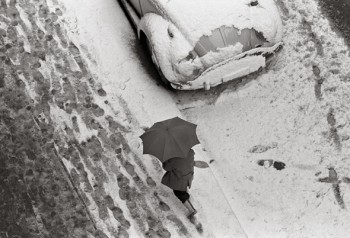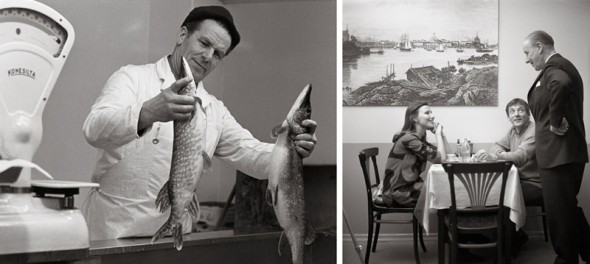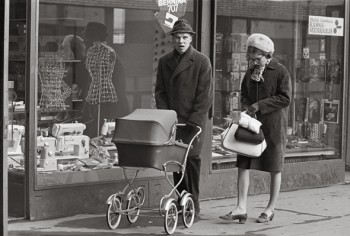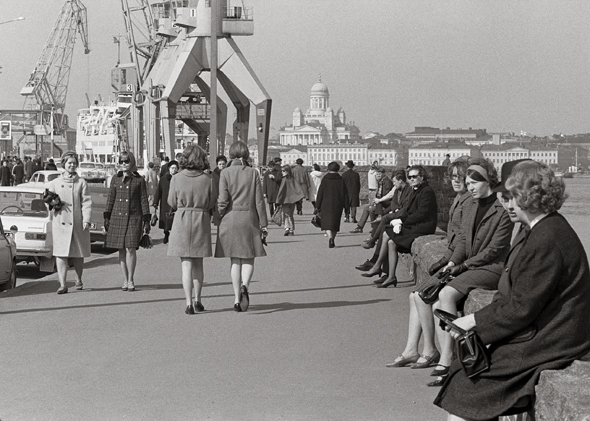Bright lights, small city
26 August 2010 | Articles, Non-fiction
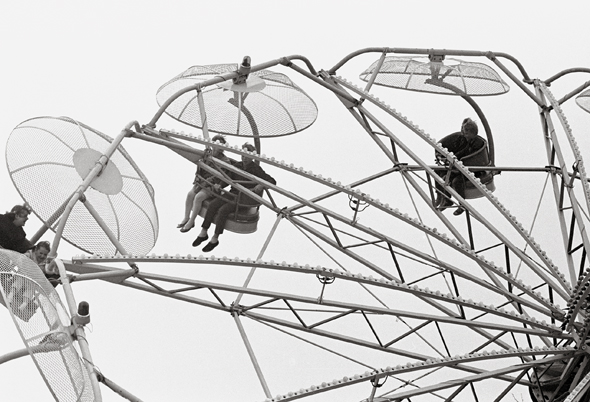
Helsinki people on the big wheel: Linnanmäki amusement park, 1968

Helsinki people on the big wheel: Linnanmäki amusement park, 1968
Photographs and excerpts from Helsinki 1968 by Claire Aho and Kjell Westö (text in Finnish, Swedish and English; WSOY, 2010)
A year that rocked the world: 1968. The Vietnam War, the Chinese cultural revolution, the invasion of Czechoslovakia, hunger in Biafra. Helsinki that year: a quiet little city, in a quiet little country. But Finland’s baby-boomers, born after the war, were now coming of age, resulting in the beginnings of a change of generation in politics; and the students of Helsinki University joined the global student unrest of this ‘crazy year’. Photographer Claire Aho takes a series of photographs of her home town, participating in an exhibition in Kiel, Germany. Forty-two years later her photos are published in Helsinki 1968, together with reflections by Kjell Westö, whose novels are deeply rooted in his native city. Here are words and images of Helsinki that mirror the past – and the present
Both the city and its people carry their past with them, find it hard to let go, and don’t really want to. Many of us are reluctant to embrace the new. Hence there is often something ambivalent, something enigmatic in the frozen moment of the photograph….
Is it just nostalgia when I wonder if, in spite of the fact that many of the ideas current back then eventually led to drug addiction, terrorism and totalitarian thinking, that era was not the last chance for us Westerners to do something about our own lack of restraint, to change our lifestyle altogether in a saner, more sustainable direction?
And isn’t it awfully pessimistic to think like this? The moral imperative for a change of this kind is even greater today: we simply have to achieve it, otherwise our grandchildren and great-grandchildren will have no future.
A clergyman is interviewed in a weekly magazine in 1968. The theme is lack of values and enduring morality, everything that was once solid and reliable now seems to be melting into thin air. ‘The modern city dweller’s biggest problem is loneliness’, the clergyman says.
Forty-two years later, when for decades we have asked for everything and also expected to get it – more, more often, and better – over half of Finnish households experience loneliness, and it is even more prevalent today.
In a moving interview published in a weekly magazine in 1968, some men and women wonder, after being struck by misfortune: ‘Did we expect too much from life?’ As if Finland’s sorely-tried people still couldn’t believe that the emerging prosperity was real.
In Claire Aho’s photographs, the scarred memories of the old and the hunger for life of the young are both clearly visible. Now the old people in the photographs are gone, those who were young are growing old, and the toddlers of that year have turned forty.
The earth will soon have seven billion people, whereas in 1968 it only contained three and a half billion.
And Helsinki? Do we still live in a remote part of the world and the present age? Or has the distance disappeared?
Most of the distance has gone. Internationalisation began at a slow pace in the mid-1980s, but has since accelerated. In 1989 the Finnish Post Office employed people from twenty different countries. Today the company’s successor, Itella, employs twenty times as many foreign migrants, and they hail from 71 different countries.
The times may not always be what we perceive them to be, but one thing is certain: they change.
Tags: Helsinki, photography
No comments for this entry yet

